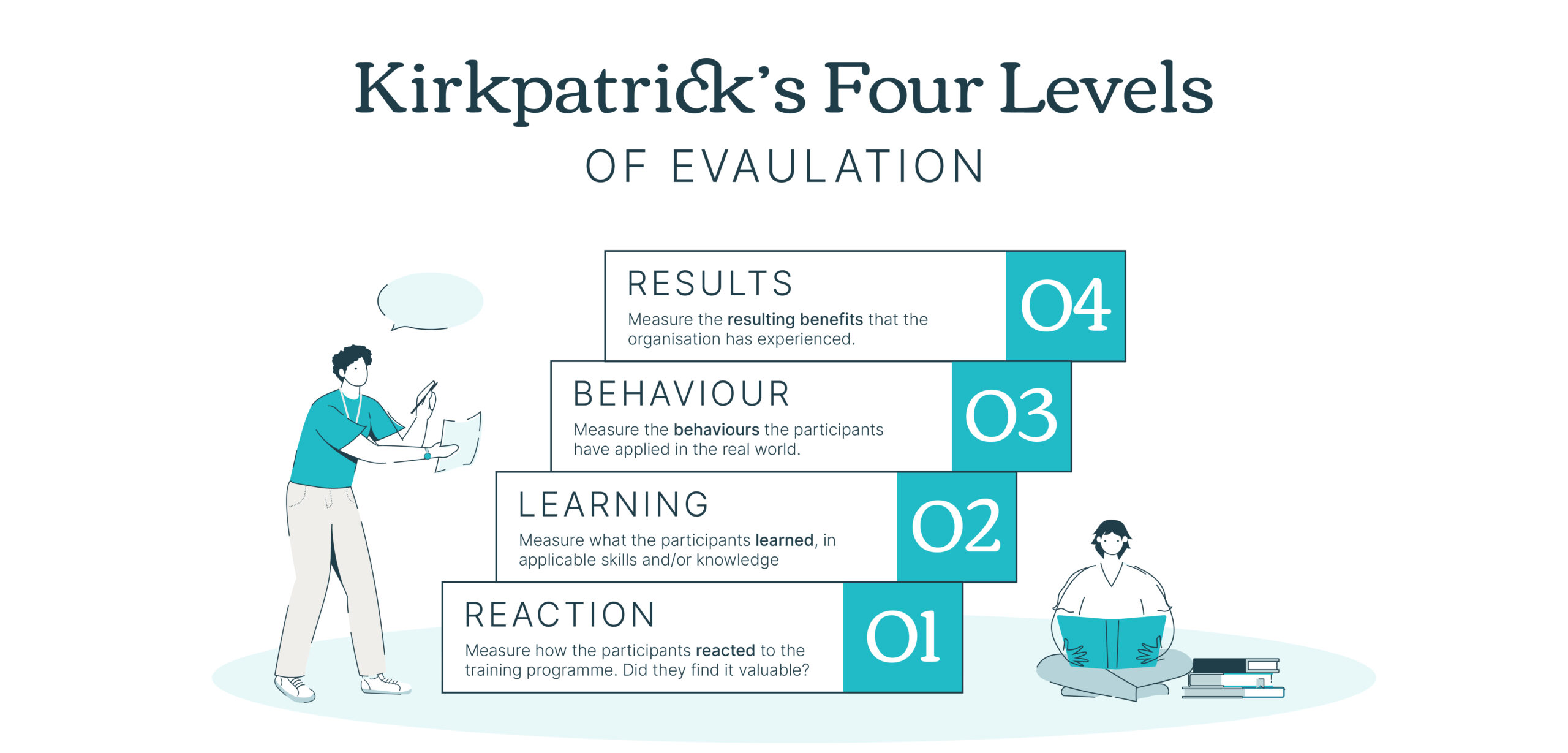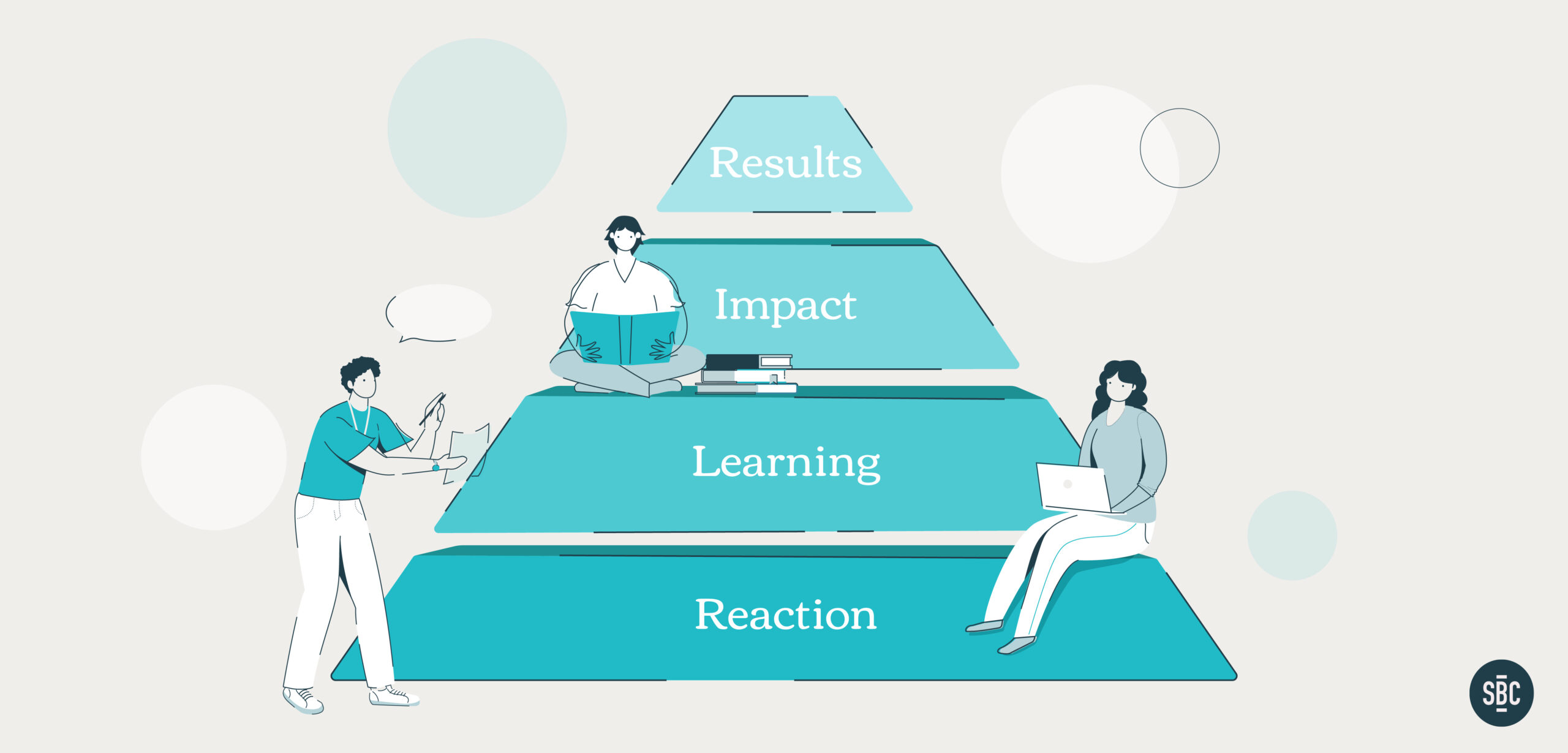Spent a small fortune – not to mention countless hours – on training that was ultimately met with a resounding ‘meh’? Here’s how to fix that.
It’s a familiar scenario. Your employees leave for an off-site training session. They watch a series of PowerPoint presentations delivered by an enthusiastic facilitator. Maybe take part in a workshop or two. Finish the day with some printouts and worksheets to take home.
Then they forget everything by the next day.
Considering billions of dollars are spent globally on learning and development each year, why is most training still so… underwhelming?
Training costs a lot – and often doesn’t work
- Training is important – 90% of surveyed employees say L&D opportunities are vital to their job satisfaction
- But most employees don’t think their organisation is getting it right – only 46% say they find value in their organisation’s available training opportunities
- And many organisations simply don’t know if it’s working – while 76% of organisations evaluate the impact of their L&D in some way, only ‘a small minority’ are evaluating the wider impact on the business or assessing the behaviour change of participants
Evaluating training with the Kirkpatrick Model
If all that sounds like you, hopefully you’re at least reassured that you’re not alone.
The fundamental issue is that most training isn’t designed with the learner as the primary focus. Instead, it’s often designed around budgets, timelines, existing tools and other variables that ultimately lead to a Frankenstein’s Monster born from competing (and sometimes conflicting) stakeholder demands.
But the good news is there’s a lot that can be done to help evaluate your training so you can be sure all that money you’re investing is well spent.
One celebrated framework is the Kirkpatrick Model.
The Kirkpatrick model advocates using the following four distinct levels when evaluating your training programmes:
- Reaction – how individuals responded to the training
- Learning – what (if anything) they learnt because of the training
- Behaviour – how (or if) behaviour changed at work following the training
- Results – how (if at all) that impact affected the organisation

The model is useful because it outlines how training benefits the business across every step – and stakeholder – in the process.
For instance, employees might love the training (Reaction), but never use it (Behaviour). Or they might put it all into action, but that might not actually bring any benefit to the business (Results).
Then there’s the opposite – training that appears wildly unpopular based on feedback might be incredibly effective when it comes to the results it drives.
If you can assess all four levels covered by Kirkpatrick, it’s a great benchmark for whether training has been worthwhile.
Five practical steps to apply the Kirkpatrick Model
Having a framework like this might sound great on paper, but how do you get started? Well, here are five steps to give your training a fighting chance.
1. Work backwards from the desired end result
Rather than starting with a vague idea that you need better leadership or management skills, be specific – what is your desired outcome? If you don’t know what outcome you want, how are you going to know if you achieved anything?
So, start with the business goal (or need) and work backwards.
A training needs analysis will help you do this. You can use the process to identify which skills you need to achieve your end result and from there assess which of these skills are missing. Once you know what gaps you need to plug, you’ll be able to offer the right type of training to the right people, saving you valuable time and resources.
Are you wanting to cut accidents in the workplace? To facilitate a shift to a new tool? Help sales staff increase their close rates? Or to cut employee turnover?
Once you know what your goal is, you can reverse engineer your programme, effectively putting Kirkpatrick’s final assessment level – Results – as the number one priority. And it makes it much more likely your training will have the business impact you’re hoping for.
Another great tip here is that, although you may be able to find the right “off the shelf” option from a learning provider if the topic is generic enough, there will be some topics and situations that are so unique to your current business and problems that it may be best to design something bespoke that really meets your needs.
A bigger investment in really getting this right in the beginning may lead to much better results in the end.
2. Include key stakeholders from the start
Once you know the goal, the training programme should be designed or selected with input from everyone involved in the process – including learners.
By doing so you boost the likelihood that the content a) addresses a real need among employees, and b) delivers the desired return on investment.
But remember: all feedback is secondary to the end result from point one.
For instance, if learner feedback is negative because they see the training as difficult, but that difficulty is exactly what makes it effective, then it’s probably OK to leave it as is.
3. Connect learning to business KPIs
Learning often runs the risk of being seen as ‘fluffy’. A perk, or a nice-to-have.
Of course, done right, L&D is mission critical for most organisations. After all, no one wants to be outperformed by their competition.
If you can connect your training to hard measures of business success, such as increased revenues or improved profit margins, you’ll be well placed to ring-fence that L&D budget – and maybe ask for more next year.

4. Measure improvement continuously
Once you have identified your metrics you should track them regularly.
Be it customer satisfaction scores, employee engagement, volume of sales calls, presentations to clients, proposals sent out, etc., constantly evaluating performance will give you a much clearer idea of what needs to be done to keep improving results.
For instance, you might notice instead of a whole new training programme, a simple refresher course every 18 months is enough to avoid a downtick in results.
That can help to keep employees engaged – and save you a whole heap in developing new courses from scratch each time.
5. Use behavioural science to really maximise your results
The key to the Kirkpatrick model is that it’s not a box-ticking exercise. The result at the end isn’t a binary yes/no of whether someone attended, but instead a demonstration of how the training has impacted the wider organisation.
Good training might generate a positive result, but great training could get even better results.
Most of this will come down to step three – Behaviour. Are people acting on what they’ve learnt?
Behaviour change is an immensely complicated area (in fact, it’s literally a science).
That means there’s a whole heap of insights into how we can turn what we learn into action. You can use things like spacing, chunking, fluency effects, the peak-end rule, loss aversion, the Zeigarnik effect and a whole host of other insights into how people think, learn, and ultimately change.
If you can effectively tap into all of that and get people to truly embrace their learning – and change as a result – your training will have real impact not only for your employees, but for your organisation too.
Want to know more about these specific insights, and a few others that we think are relevant to every e-learning programme?





